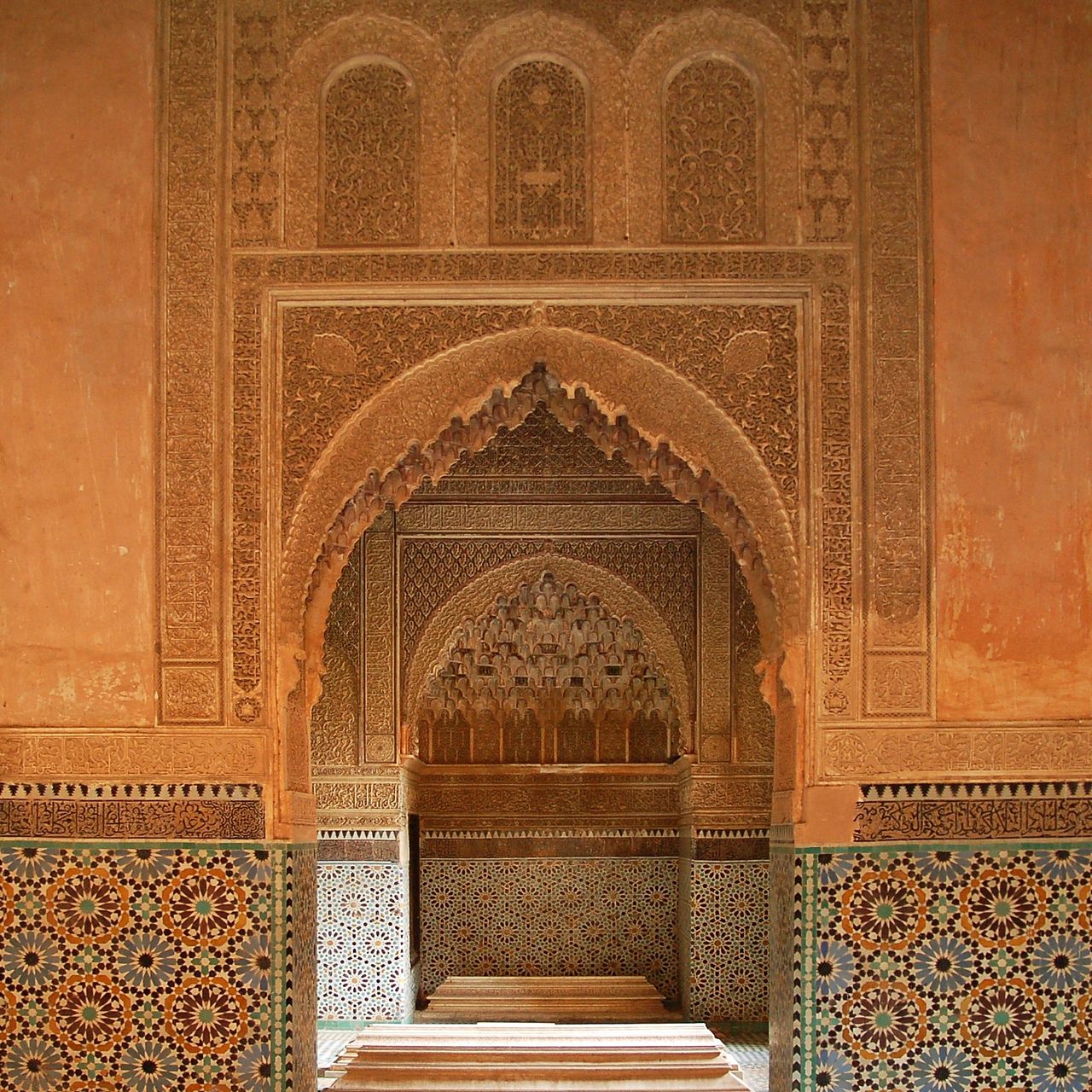Wandering through the Kasbah neighborhood via Bab Aguenaou, the splendor of the Moulay el Yazid Mosque catches our eye, a luxurious place of worship adjoined by the Saadian tombs. Dating back to the reign of Sultan Ahmed al-Mansur Saadi (who is also credited with building the Badii Palace), the burial site was established at the end of the 16th century to house the mausoleums of princes.

Thus, the koubba (the dome) among others, shelters the remains of Mohammed Ech Cheikh, founder of the Saadian dynasty, and that of the Marinid Sultan, Abou el Hassan. However, upon the arrival of the Alaouites in Marrakech, Sultan Moulay Ismaïl decided to destroy masterpieces reflecting the glory of his predecessors, including the Badii Palace, but spared the tombs and ordered for the entrance to be walled up. In 1917, this secret space was unveiled to the public, and then entrusted to the Fine Arts department for restoration.

Glorification of Hispano-Moorish art
Ahmed al-Mansur Saadi, also nicknamed the "Golden", placed great importance on art and architecture, integrating Saadian art within the Andalusian tradition. In this spirit, the necropolis was built using noble materials and divided into three main areas:
- The Mihrab room: Originally, this room was an oratory that also served as a prayer room. From the 18th century onwards, the graves of about twenty sultans were added. Stucco stalactites and Carrara marble from Italy were used for the decoration of the Mihrab, all enhanced by an impressive engraved cedar door.
- The room of twelve columns: The attention to detail and the richness of the decor make this room the most impressive space of the monument. The center of the room is occupied by the tomb of Sultan Ahmed "the Golden" surmounted by a cedar wood dome sprinkled with gold leaves.
- The room of three niches: Handcrafted cedar wood, mosaics and stucco decorate this part of the building that houses the tombs of the children of the Saadian sultans.
As for the necropolis garden, it is occupied by the graves of the twenty four wives of Ahmed el Mansour as well as those of a few soldiers and loyal servants who had the honor of being buried near the royal families.

Today, the Saadian tombs are an integral part of both tourist routes and educational outings within the ochre city, with accredited guides available for visiting the tombs.
